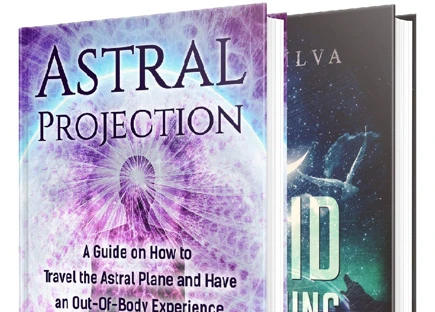It’s a peculiar and mysterious phenomenon that has fascinated humans for centuries—the ability to explore a world beyond our physical reality, where we can control our dreams and even venture into realms beyond our bodies. But what exactly is the connection between lucid dreaming and out-of-body experiences (OBEs)? Are they two sides of the same coin or distinct experiences with overlapping characteristics? In this article, we will dive deep into the intriguing world of lucid dreaming and OBEs, exploring their similarities, the neuroscience behind them, the techniques to induce them, and the research studies and expert insights that shed light on their connection. Step into the realm of the extraordinary, where the boundaries of our reality cease to exist and where dreams and the ethereal intertwine.
What are Lucid Dreams?
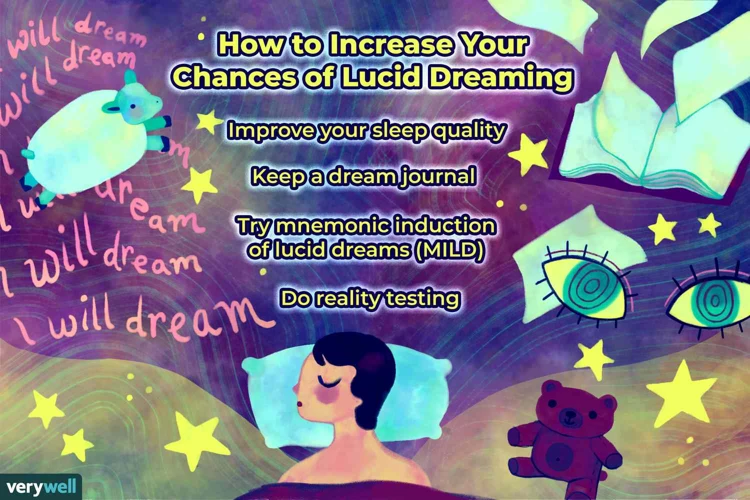
Lucid dreams are unique experiences in which the dreamer becomes aware that they are dreaming while still being in the dream state. This awareness allows individuals to have a certain level of control over their dreams, enabling them to manipulate the dream environment, characters, and even the narrative of the dream itself. During a lucid dream, the dreamer can consciously make decisions, engage in activities, and experience sensations as if they were awake. This heightened state of consciousness opens up a world of possibilities, where the boundaries between reality and imagination blur. Lucid dreaming can be induced through various techniques, such as reality checks, where the dreamer questions their reality by performing specific actions or observing their surroundings for inconsistencies. Mnemonic induction of lucid dreams (MILD) involves setting intentions and rehearsing the desire to have a lucid dream before falling asleep. Affirmations and visualization techniques can also be used to enhance the chances of experiencing a lucid dream. So whether you want to soar through the sky, visit exotic locations, or interact with fantastical creatures, lucid dreaming grants you the power to turn those dreams into stunning realities.
What are Out-of-Body Experiences?
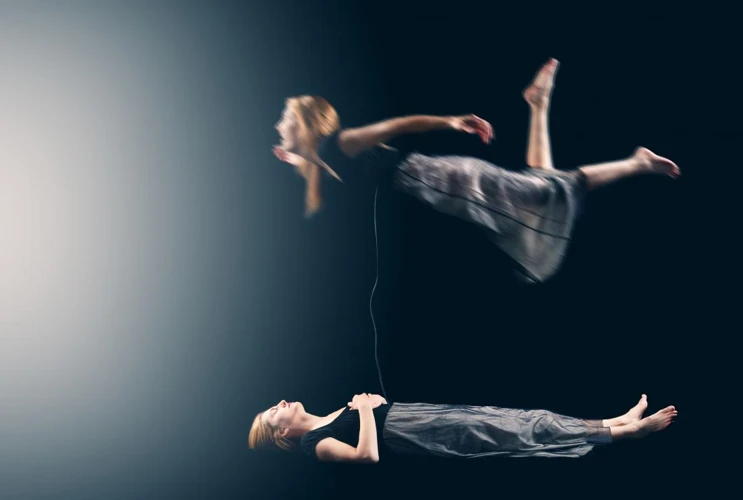
Out-of-body experiences (OBEs) are extraordinary occurrences in which individuals perceive themselves as having temporarily separated from their physical bodies, allowing them to exist and perceive the world from a location outside their physical form. During an OBE, individuals may report observing their own body from a third-person perspective or floating above it. They may also describe feelings of weightlessness, freedom of movement, and a heightened sense of perception. OBEs can occur spontaneously, often during traumatic experiences, near-death experiences, or during deep meditation practices. Some individuals actively seek to induce OBEs through techniques such as meditation, sensory deprivation, or astral projection exercises. While the mechanisms behind OBEs are not fully understood, they are often associated with altered states of consciousness and can provide individuals with a sense of expanded awareness and the opportunity to explore realms and dimensions beyond the physical. The link between OBEs and lucid dreams is fascinating, as they both involve a shift in perception and consciousness, allowing individuals to transcend their physical limitations and venture into uncharted territories of the mind and spirit.
The Similarities
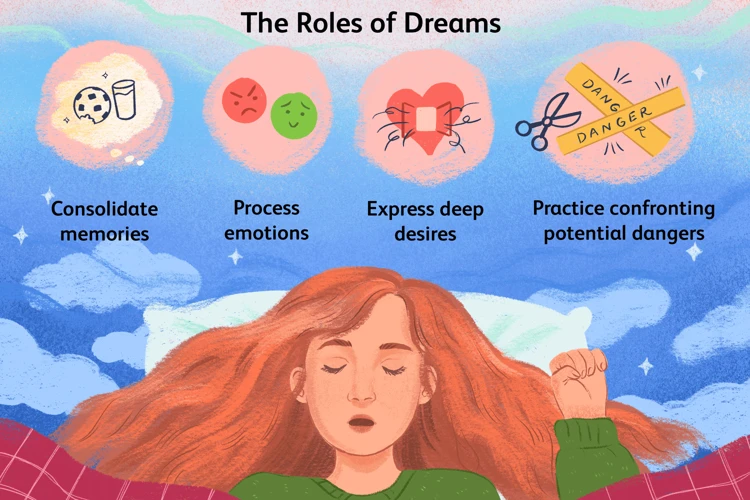
When examining lucid dreams and out-of-body experiences (OBEs), it becomes evident that there are several striking similarities between the two phenomena. Both lucid dreams and OBEs involve a profound shift in one’s awareness and consciousness, allowing individuals to transcend the limitations of their physical bodies. In both experiences, individuals can have a sense of detachment from their physical form and perceive themselves from a different perspective, whether it’s observing their body from an external viewpoint or exploring dream environments with a heightened sense of self-awareness. Additionally, both lucid dreams and OBEs often involve vivid sensory experiences, where individuals can see, hear, touch, and even taste within the dream or out-of-body state. This overlap in sensations further blurs the line between the two experiences, making it challenging to differentiate between them at times. Individuals who have experienced both lucid dreams and OBEs often report a sense of agency and control over their environment, being able to manipulate elements within the dream or out-of-body state. This ability to influence and shape the experience further strengthens the connection between lucid dreams and OBEs. Nonetheless, while there are many similarities, it’s important to recognize that lucid dreaming and OBEs are distinct experiences with their own unique characteristics and implications. To explore the techniques and practices for inducing lucid dreams, you can read our comprehensive guide on reality checks for lucid dream induction.
The Neuroscience Perspective
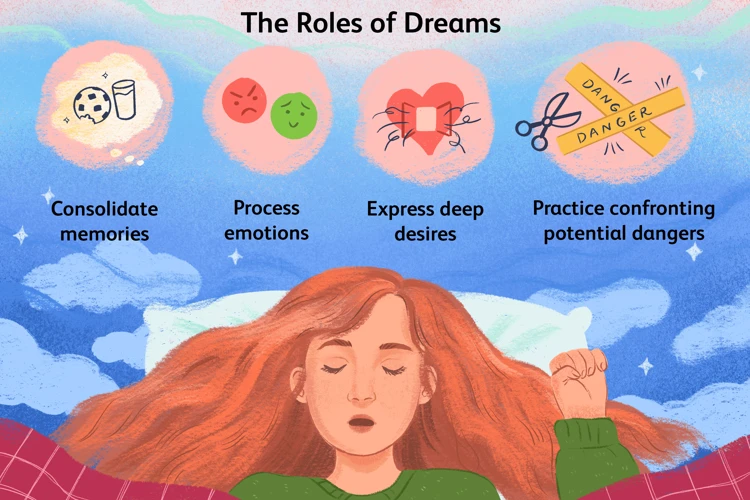
The neuroscience perspective offers valuable insights into the phenomenon of lucid dreaming and its connection to out-of-body experiences. Research has shown that lucid dreaming involves increased activity in the prefrontal cortex, the region of the brain responsible for higher-order cognitive processes such as self-awareness, decision-making, and attention. This heightened activation allows individuals to recognize the dream state and maintain conscious awareness while dreaming. Additionally, studies using functional magnetic resonance imaging (fMRI) have revealed that during lucid dreaming, there is a decrease in activity in the dorsolateral prefrontal cortex, a region responsible for self-referential processing and reality monitoring. This reduction in activity may contribute to the suspension of disbelief and acceptance of the dream environment as a genuine reality. The link between lucid dreaming and OBEs has been explored from a neuroscientific standpoint. Some researchers hypothesize that both experiences may involve the disintegration of the typical self-body relationship, leading to a sense of disembodiment and an altered perception of one’s spatial position. Although the neuroscientific understanding of these phenomena is still evolving, it sheds light on the fascinating interplay between the brain, consciousness, and the extraordinary experiences of lucid dreaming and OBEs. (Source: using-affirmations-lucid-dream-induction)
Common Techniques to Induce Lucid Dreams and OBEs
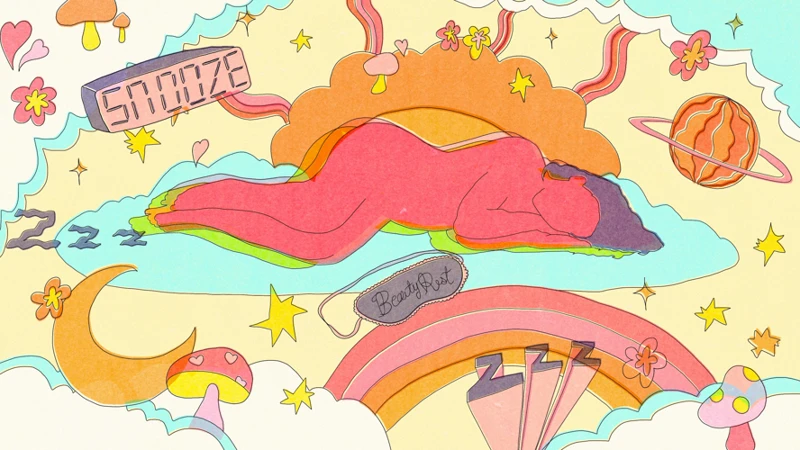
There are several common techniques that can be utilized to induce both lucid dreams and out-of-body experiences (OBEs). These techniques aim to enhance self-awareness and control during these altered states of consciousness.
1. Reality Checks: Reality checks involve regularly questioning the nature of your reality, whether you are awake or dreaming. This can include activities such as looking at your hands, trying to read something, or observing your surroundings for any inconsistencies. By making this a habit in your waking life, you are more likely to perform these reality checks in your dreams, triggering lucidity.
2. Mnemonic Induction of Lucid Dreams (MILD): MILD is a technique that involves setting intentions and affirmations before falling asleep. Repeat a phrase like “I will remember that I am dreaming” while visualizing yourself becoming lucid in a dream. This technique helps to prime the mind for lucidity and increases the chances of having a lucid dream.
3. Wake-Back-to-Bed (WBTB): With the WBTB technique, you wake up after about five to six hours of sleep and stay awake for a short period of time. During this time, engage in activities that promote wakefulness and stimulate the mind, such as reading about lucid dreaming or practicing meditation. After this period, go back to sleep with the intention of having a lucid dream or an OBE.
4. Mindfulness Meditation: Mindfulness meditation, both in waking life and before sleep, can improve self-awareness and enhance the ability to recognize and control dream and out-of-body experiences. By practicing mindfulness regularly, you can cultivate a state of heightened awareness, which can carry over into your dream and OBE states.
Remember, these techniques may require practice and patience before desired results are achieved. Each individual may respond differently to these techniques, so it’s important to experiment and find what works best for you. Discover the fascinating realm of lucid dreaming and OBEs by incorporating these techniques into your routine. The possibilities are limitless.
For more detailed information on inducing lucid dreams, check out our comprehensive guide on mnemonic techniques for lucid dreams.
The Connection and Overlapping Phenomena

As we delve into the realms of lucid dreaming and out-of-body experiences (OBEs), it becomes apparent that these phenomena share intriguing connections and overlapping characteristics. While lucid dreams occur within the realm of sleep and dreams, OBEs involve a sensation of being detached from the physical body and exploring the world beyond. However, both lucid dreams and OBEs involve a heightened state of awareness and consciousness, providing a sense of control and agency within the dream or out-of-body state. The link between these experiences lies in the exploration of altered states of consciousness and the capacity to transcend the limitations of the physical body. Techniques such as the mnemonic induction of lucid dreams (MILD) can be utilized to induce both lucid dreams and OBEs, demonstrating the potential interconnectedness of these phenomena. Whether we are traversing dreamscapes or venturing beyond our physical bodies, the connection between lucid dreaming and OBEs offers us a glimpse into the vast potential of the human consciousness.
1. Shared Sensations
Shared sensations are a fascinating aspect of the connection between lucid dreaming and out-of-body experiences (OBEs). In both states, individuals report experiencing vivid sensory perceptions that feel incredibly real. During a lucid dream, one can touch, taste, smell, see, and hear with astonishing clarity and detail. The senses are heightened, creating a sense of immersion in the dream environment. Similarly, in OBEs, individuals often describe the sensation of floating or hovering above their physical bodies. They can perceive their surroundings as if observing from a different perspective. This shared aspect of heightened sensory experiences suggests a commonality between lucid dreams and OBEs, blurring the lines between the dream world and the waking world. Researchers speculate that these shared sensations occur due to the activation of similar brain regions responsible for sensory processing and perception. As consciousness occupies its transitional state, the brain conjures up rich sensory experiences, amplifying the realism in both lucid dreams and OBEs. The power of the mind to simulate and generate sensory input during these states is truly remarkable. To learn more about the techniques to induce lucid dreams, you can refer to our guide on mnemonic induction of lucid dreams (MILD).
2. Consciousness Shift
The second aspect of the connection between lucid dreaming and out-of-body experiences is the consciousness shift that occurs in both phenomena. In both lucid dreams and OBEs, there is a distinct change in the level of consciousness and self-awareness. During a lucid dream, the dreamer becomes fully aware of their state of dreaming and is able to actively participate and manipulate the dream environment. This shift in consciousness allows for a sense of control and agency within the dream world. Similarly, in an OBE, individuals report a shift in their awareness from their physical body to an external perspective. They often report observing their body from a different vantage point or floating above it. This shift in consciousness provides a unique and immersive experience where individuals can explore their surroundings and interact with the environment beyond the constraints of their physical body. Both lucid dreaming and out-of-body experiences offer a profound shift in consciousness, blurring the lines between the waking world and the realm of the subconscious.
3. Exploring Infinity
In the realm of lucid dreaming and out-of-body experiences, there is a common theme that emerges: the ability to explore infinity. This concept refers to the vastness and limitless possibilities that individuals can encounter when venturing beyond the confines of their physical bodies. Within the lucid dream state, dreamers often experience a sense of boundless freedom, where they can traverse vast landscapes, visit distant planets, or explore surreal dimensions that defy logic and the laws of physics. This exploration of infinity within lucid dreams is facilitated by the dreamer’s ability to manipulate and create their own dreamscapes, unencumbered by the constraints of the waking world. Similarly, in out-of-body experiences, individuals report transcending physical limitations and encountering expansive realms that extend far beyond their immediate surroundings. These transcendental experiences offer a glimpse into the infinite possibilities that exist beyond our ordinary perception of reality. Whether it’s navigating through cosmic landscapes, delving into the depths of the subconscious, or communing with higher states of consciousness, the exploration of infinity provides a profound and awe-inspiring journey for those who dare to venture into the realms of lucid dreaming and OBEs.
4. Traveling Known and Unknown Realms
When exploring the connection between lucid dreaming and out-of-body experiences (OBEs), one fascinating aspect is the ability to travel to both known and unknown realms. In a lucid dream, individuals have the freedom to navigate through dreamscapes that can be based on real-world locations or completely fantastical realms limited only by the dreamer’s imagination. One can effortlessly visit familiar places like their childhood home, a favorite vacation spot, or even historical landmarks from different eras. However, what truly sets lucid dreaming apart is the possibility of venturing into uncharted territories, completely disconnected from the confines of our waking reality. These dreamers can explore otherworldly landscapes filled with vibrant colors, surreal landscapes, and interact with extraordinary entities. They may find themselves in futuristic cities, mythical realms, or even abstract dimensions that defy logic and physics. The experience of traveling to unknown realms in a lucid dream is awe-inspiring, granting an unparalleled sense of adventure and discovery.
Research Studies and Expert Insights
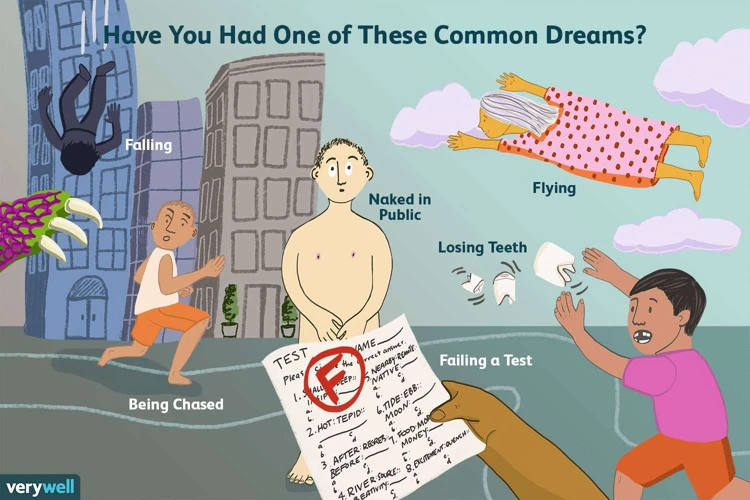
Research studies and expert insights provide valuable knowledge and understanding about the connection between lucid dreaming and out-of-body experiences (OBEs). Scientific studies have explored the neural correlates, cognitive processes, and physiological aspects of both phenomena. These studies have shed light on the brain regions involved in lucid dreaming and OBEs, such as the prefrontal cortex and parietal lobe. They have also explored the role of factors like self-awareness, attention, and temporal integration in these experiences. Additionally, experts in the field have offered their perspectives on the similarities and differences between lucid dreaming and OBEs. They have delved into topics such as the nature of consciousness, the role of perception, and the possibility of consciousness existing beyond the physical body. By examining these research studies and expert insights, we can gain a deeper understanding of the underlying mechanisms and implications of lucid dreaming and OBEs, further unraveling the enigmatic relationship between these extraordinary experiences.
1. Scientific Studies on Lucid Dreaming and OBEs
Scientific studies have shed light on the fascinating realm of lucid dreaming and out-of-body experiences (OBEs). Researchers have conducted various studies to investigate the neural correlates and phenomenology of these experiences. One notable study published in the journal “Frontiers in Psychology” examined the EEG (electroencephalography) patterns of lucid dreamers and found that lucid dreaming was associated with increased activity in the prefrontal cortex, the region of the brain associated with higher cognitive functions and self-awareness. Another study published in the journal “Consciousness and Cognition” explored the similarities and differences between lucid dreaming and OBEs through interviews with individuals who reported having both experiences. The findings revealed intriguing overlaps in terms of vividness, introspection, and altered states of consciousness. Additionally, studies using neuroimaging techniques, such as functional magnetic resonance imaging (fMRI), have provided insights into the brain mechanisms underlying these phenomena. For instance, a study published in “Cerebral Cortex” demonstrated that certain brain regions, including the temporoparietal junction, showed increased activation during OBEs. These scientific investigations have provided valuable empirical evidence and deepened our understanding of the intricate nature of both lucid dreaming and OBEs, offering a glimpse into the fascinating workings of the human brain and consciousness.
2. Expert Perspectives on the Connection
Expert perspectives on the connection between lucid dreaming and out-of-body experiences offer valuable insights into this fascinating phenomenon. Renowned psychologists, neuroscientists, and spiritual practitioners have offered their perspectives based on their research and personal experiences. One prevalent view is that while lucid dreaming and OBEs share similarities in terms of altered states of consciousness and the ability to explore different realms, they are distinct experiences. According to expert opinions, lucid dreaming is considered an internal experience, where the dreamer is aware of being in a dream and can manipulate the dream environment and narrative. On the other hand, OBEs are seen as experiences where individuals perceive themselves as being separate from their physical bodies and are able to explore the external world. Experts suggest that although the two phenomena may have shared elements, they likely originate from different neurological and psychological processes. Some researchers propose that lucid dreaming could play a role in inducing or enhancing OBEs, or that OBEs may occur during certain stages within a lucid dream. These expert perspectives contribute to our understanding of the intricate relationship between lucid dreaming and OBEs, delving deeper into the complexities of the human mind and consciousness.
Personal Experiences Shared by Lucid Dreamers and OBE Practitioners

Personal experiences shared by lucid dreamers and out-of-body experience (OBE) practitioners provide fascinating insights into the depths of these extraordinary phenomena. Lucid dreamers have reported a myriad of enriching and exhilarating adventures within their dreams. They recount the ability to fly effortlessly through the skies, engage in conversations with dream characters, and even manipulate the dream environment at will. These experiences often elicit intense emotions, such as awe and wonder, as individuals explore and interact with seemingly alternate realities within the dream realm.
In contrast, practitioners of OBEs describe a dissociation of consciousness from the physical body, allowing them to perceive and interact with the world outside their corporeal form. They describe floating above their bodies, observing their physical surroundings from a unique vantage point, and often experiencing a profound sense of freedom and liberation. Some even claim to travel to distant places, encounter spiritual beings, or access higher realms of consciousness. These experiences can be deeply transformative, leading to personal growth, expanded awareness, and a reassessment of their understanding of reality.
While lucid dreaming and OBEs are distinct phenomena, there are instances where individuals report experiencing both states simultaneously or transitioning from one to the other. This overlap contributes to the fascinating continuum that exists between lucid dreaming and OBEs. The personal narratives of these individuals shed light on the intriguing nature of these phenomena and inspire further exploration and understanding.
These personal experiences serve as a testament to the vast potential of the human mind and its ability to transcend the limitations of physical reality. They provide valuable insights into the subjective nature of consciousness and the interconnectedness of dreams and out-of-body experiences. By delving into these shared stories, we begin to unravel the enigmatic tapestry of the human mind and its ability to navigate the realms of both dreams and spirituality.
The Lucid-OBE Continuum
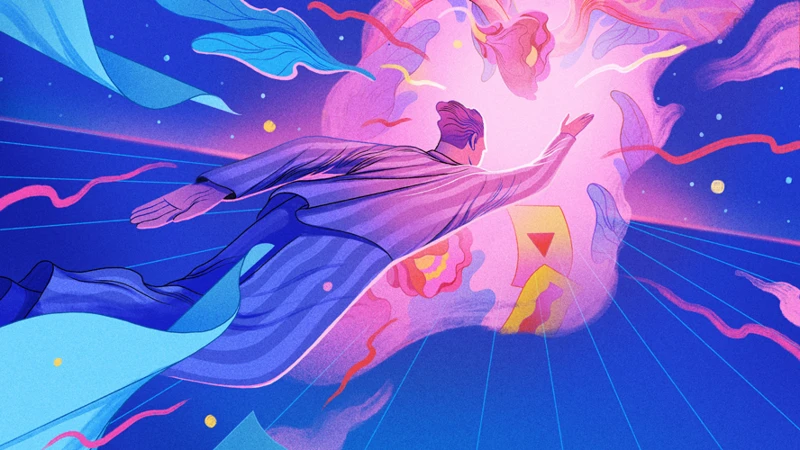
The Lucid-OBE continuum represents the interconnected spectrum of experiences that lie between lucid dreams and out-of-body experiences (OBEs). While lucid dreams and OBEs are often considered distinct phenomena, there are instances where the boundaries between the two become blurred, giving rise to a continuum of experiences that share characteristics of both. At one end of the continuum, we have the classic lucid dream, where the dreamer is aware and in control within the dream environment. As we move along the continuum, the dreamer may experience a state where they have partial control over their dream environment or perceive a separation from their physical body, indicating a transition towards an OBE-like state. This transitional state is commonly referred to as a “lucid OBE” or “dream-induced OBE.” On the other end of the continuum, we have the full-fledged OBE, where individuals perceive themselves as existing outside of their physical body, often floating or moving independently. This continuum suggests that lucid dreaming and OBEs are not necessarily separate entities, but rather exist on a spectrum of experiences that can merge and overlap.
Benefits and Applications
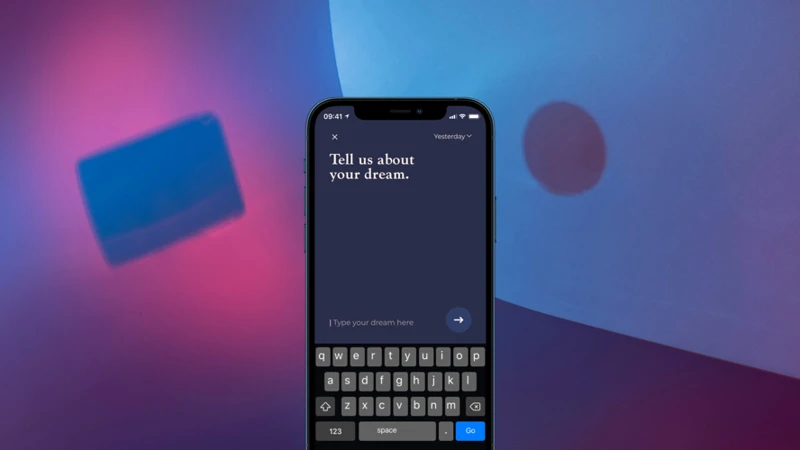
Lucid dreaming and out-of-body experiences (OBEs) offer a range of benefits and applications that can enrich our lives in various ways. One of the primary benefits of lucid dreaming is the ability to tap into our creativity and imagination. In a lucid dream, we have the freedom to explore new ideas, scenarios, and possibilities that can inspire our creative endeavors in waking life. Additionally, lucid dreaming can help individuals overcome fears and phobias by providing a safe space for facing and resolving them within the dream world. This process, known as dream therapy, can be a powerful tool for personal growth and healing. Lucid dreaming can also be used for problem-solving and self-reflection, where individuals can delve into their subconscious mind and gain insights into unresolved issues or find solutions to challenges they may be facing. As for OBEs, they offer a unique opportunity to explore the nature of consciousness and the metaphysical dimensions of existence. OBEs can provide individuals with a sense of expanded awareness and a deeper understanding of their interconnectedness with the world around them. Some individuals report profound spiritual experiences during OBEs, feeling a connection to transcendent realms, higher beings, or a collective consciousness. Both lucid dreaming and OBEs have applications beyond personal development. They can be used in fields such as psychology, neuroscience, and even entertainment. Lucid dreaming techniques can aid therapists in understanding and working with clients’ dreams, and OBE research can contribute to a better understanding of consciousness and the nature of reality. Lucid dreaming and OBEs have been featured in movies, books, and art, captivating audiences and inspiring creative works. The practical and transformative applications of lucid dreaming and OBEs make them fascinating avenues for exploration and discovery in various aspects of our lives.
Overcoming Challenges and Dangers
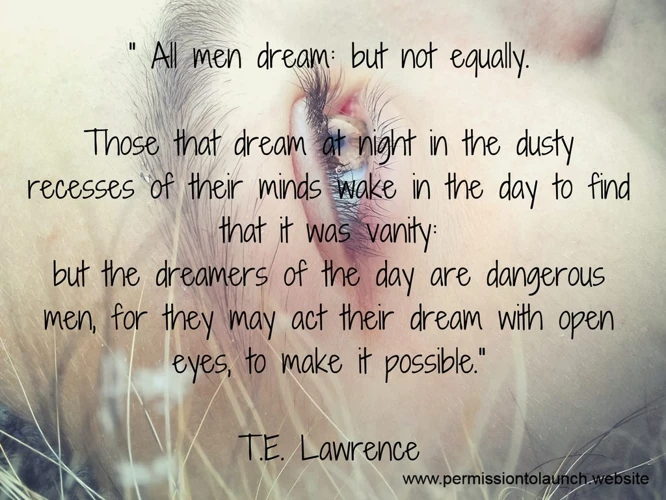
Exploring the realm of lucid dreaming and out-of-body experiences comes with its own set of challenges and potential dangers. While these experiences can be awe-inspiring and transformative, it is important to approach them with caution. One significant challenge is the difficulty in inducing lucid dreams or OBEs consistently. It can take time and practice to reach a state of lucidity or to successfully project one’s consciousness beyond the physical body. Another challenge is maintaining stability and control within these experiences. Sometimes, the excitement or intense emotions of lucid dreaming or OBEs can cause the dreamer to quickly wake up or lose control of the experience. Additionally, there may be psychological and emotional challenges that arise when exploring the depths of one’s subconscious mind or encountering unknown realms. It is crucial to have a strong mental and emotional foundation to navigate these experiences safely. It is important to be aware of the potential dangers associated with lucid dreaming and OBEs. These include sleep disturbances, such as insomnia or disrupted sleep patterns, as well as confusion between dream and waking reality. There is also a risk of becoming too immersed in these experiences, leading to a detachment from everyday life or neglecting real-world responsibilities. It is essential to approach lucid dreaming and OBEs with a balanced and grounded mindset, seeking guidance from experienced practitioners or professionals when necessary. With mindfulness, self-awareness, and responsible exploration, it is possible to overcome these challenges and navigate the realm of lucid dreaming and OBEs safely.
The Role of Mindfulness and Meditation
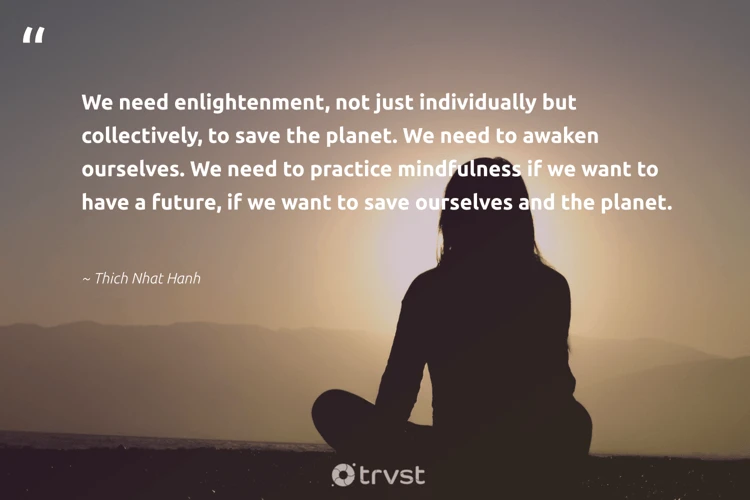
The role of mindfulness and meditation in the realm of lucid dreaming and out-of-body experiences (OBEs) is crucial. Mindfulness, which involves focusing attention on the present moment, can help individuals cultivate a heightened sense of awareness that carries over into their dream state. By practicing mindfulness throughout the day, individuals are more likely to recognize the subtle cues and anomalies that indicate they are dreaming. This increased self-awareness can lead to lucidity within dreams and the ability to consciously navigate and control them. Additionally, meditation can be a powerful tool for achieving lucidity and OBEs. By regularly practicing meditation, individuals develop a greater capacity for relaxation, concentration, and introspection. This mental clarity and stability can pave the way for deeper dream exploration and the ability to consciously exit the physical body during sleep. Incorporating mindfulness and meditation into one’s daily routine not only enhances the likelihood of lucid dreaming and OBEs but also fosters a deeper sense of self-discovery, spiritual growth, and overall well-being. So, take a moment to breathe, be present, and delve into the profound depths of your inner consciousness.
Interpreting Lucid Dreams and OBEs

Interpreting lucid dreams and out-of-body experiences (OBEs) is a fascinating endeavor that requires careful reflection and analysis. These extraordinary states of consciousness often contain symbolism and hidden meanings that can provide valuable insights into our subconscious mind and inner psyche. When it comes to interpreting lucid dreams, it is essential to pay attention to the emotions, symbols, and patterns present within the dream. Emotions, such as fear or joy, can indicate underlying psychological states or unresolved conflicts. Symbols that appear in lucid dreams, such as animals, objects, or specific locations, may hold personal significance or represent archetypal symbols with universal meanings. Patterns within the dream, such as recurring themes or situations, can provide clues about recurring patterns and issues in our waking life. Similarly, interpreting OBEs involves examining the experiences and the information gathered during the out-of-body journey. This can involve exploring the environments visited, the interactions with other beings or entities, and the sensations and perceptions experienced during the OBE. Reflecting upon these elements can help uncover insights about our spiritual growth, the nature of consciousness, and our connection to the larger universe. It is important to approach the interpretation of lucid dreams and OBEs with an open mind, embracing the subjective nature of these experiences and allowing personal meaning to emerge. Whether seen as a window into the subconscious or a glimpse into the transcendent, the interpretation of lucid dreams and OBEs offers a profound opportunity for self-discovery and personal growth.
The Spiritual and Transcendental Dimensions
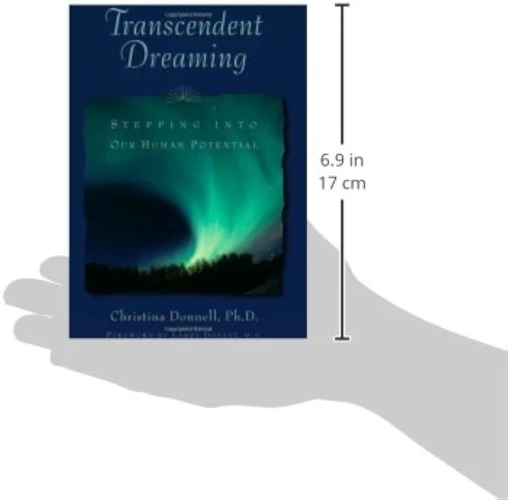
The realm of lucid dreaming and out-of-body experiences (OBEs) extends beyond the bounds of the physical world, delving into the realm of spirituality and transcendence. Many individuals who have experienced lucid dreams or OBEs describe powerful and profound spiritual encounters during these altered states of consciousness. These experiences can provide a sense of awe, wonder, and connectedness with something greater than oneself. People have reported encounters with deceased loved ones, encounters with spiritual guides, and even journeys to otherworldly realms. The spiritual and transcendental dimensions of these experiences open up possibilities for personal growth, self-discovery, and even spiritual awakening. Some suggest that lucid dreams and OBEs can be utilized as tools for spiritual practices, such as meditation, introspection, and self-reflection. These experiences offer a unique opportunity to explore the depths of our consciousness and tap into the vastness of the spiritual realm. Whether one views these experiences as purely psychological or believes in the existence of a greater metaphysical reality, it is undeniable that lucid dreams and OBEs have the potential to provide profound insights and experiences that go beyond the confines of our everyday existence.
Tools and Technologies for Enhancing Lucid Dreams and OBEs
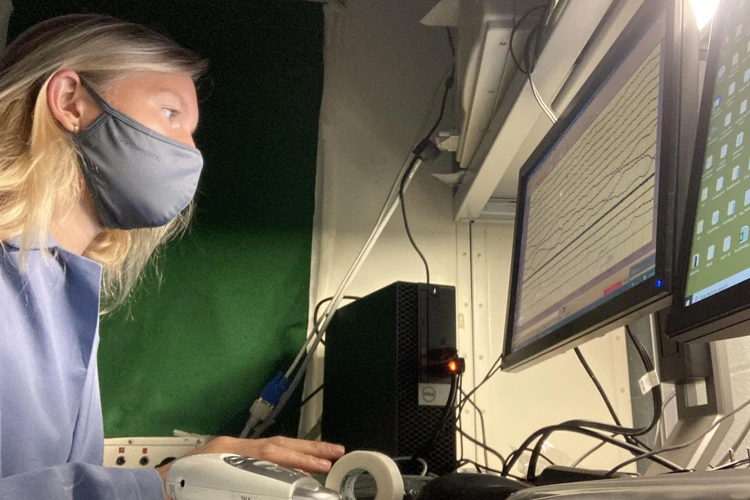
When it comes to enhancing lucid dreams and out-of-body experiences (OBEs), there are various tools and technologies that can assist in achieving these altered states of consciousness. One such tool is the use of lucid dreaming masks, which are designed to detect when the dreamer enters the rapid eye movement (REM) stage of sleep, a stage associated with vivid dreaming. These masks use sensors to detect eye movements and then emit subtle cues, such as flashing lights or gentle vibrations, to remind the dreamer that they are in a dream. This can help trigger lucidity and enhance dream control. Another technology commonly used is binaural beats, which involve listening to specific audio frequencies that stimulate different brainwave patterns associated with relaxation, meditation, and lucid dreaming. By wearing headphones and listening to binaural beat recordings, individuals can entrain their brainwaves to the desired state for inducing lucidity. Additionally, there are smartphone apps and wearable devices available that provide features like dream journaling, reality check reminders, and guided meditation for lucid dream induction. These tools and technologies act as catalysts, providing assistance and support in the exploration of lucid dreams and OBEs. While they can enhance the overall experience, it is important to remember that the true key to unlocking these extraordinary states lies within our own consciousness and intention.
Ethical Considerations

Ethical considerations play a crucial role when exploring the realm of lucid dreaming and out-of-body experiences. While these experiences can be exhilarating and enlightening, it is important to approach them with mindfulness and respect. One ethical consideration revolves around consent and boundaries. It is essential to gain consent from all individuals involved in any shared lucid dreams or OBEs, ensuring that everyone is comfortable and willing to participate. Respecting the boundaries of others is equally important, as invading someone’s personal space or manipulating their dream experience without permission is a violation of their autonomy. Another ethical consideration is maintaining a balance between the dream world and the waking world. Overindulging in lucid dreaming or OBEs can lead to a disconnection from reality and affect one’s daily functioning. It is crucial to prioritize responsibilities and maintain a healthy balance between the two realms. Additionally, using lucid dreaming or OBEs for harmful purposes, such as invading someone’s privacy, manipulating others, or engaging in illicit activities, should be strictly avoided. It is important to approach these experiences with integrity, respect, and a sense of accountability. Understanding and adhering to these ethical considerations ensures that lucid dreaming and OBEs remain positive and transformative experiences for individuals and the community as a whole.
Safely Venturing Into the World of Lucid Dreaming and OBEs
When venturing into the world of lucid dreaming and out-of-body experiences (OBEs), it is important to prioritize safety and personal well-being. These extraordinary experiences can be both thrilling and intense, so taking certain precautions is essential. Here are some key guidelines to safely explore the realm of lucid dreaming and OBEs:
1. Educate Yourself: Gain a deep understanding of lucid dreaming and OBEs by reading books, attending workshops, or joining online communities. This will give you valuable insights and techniques to navigate these experiences.
2. Set Clear Intentions: Before engaging in any lucid dreaming or OBE practices, clarify your intentions and why you are interested in these experiences. Having a clear goal will help you stay focused and grounded throughout your journey.
3. Develop Mental and Emotional Stability: Cultivate a regular meditation or mindfulness practice to strengthen your mental and emotional well-being. This will provide a foundation of stability and clarity as you delve into altered states of consciousness.
4. Create a Safe Sleeping Environment: Ensure that your sleeping environment is comfortable, quiet, and free from distractions. This will optimize the quality of your sleep and increase the likelihood of lucid dreaming and OBEs.
5. Practice Sleep Hygiene: Prioritize a consistent sleep routine and avoid stimulants such as caffeine or electronic devices close to bedtime. A well-rested mind and body will enhance your ability to remember dreams and engage in lucid dreaming.
6. Maintain Physical Health: Regular exercise, a balanced diet, and staying hydrated contribute to overall well-being and can positively impact your dream experiences.
7. Develop a Dream Journal: Keep a dream journal by your bedside and record your dreams as soon as you wake up. This practice improves dream recall and helps identify recurring patterns or dream signs, which can be used to induce lucidity.
8. Remain Grounded: Remember to ground yourself in reality and maintain a healthy balance between your waking life and dream experiences. Engage in activities that keep you connected to the physical world.
Remember, everyone’s experience with lucid dreaming and OBEs is unique, so take the time to understand what works best for you. Trust your intuition and prioritize self-care throughout your exploration. By following these safety measures, you can embark on a transformative journey with confidence and peace of mind.
Conclusion
In conclusion, the exploration of the connection between lucid dreaming and out-of-body experiences reveals a fascinating overlap between these two phenomena. While lucid dreaming allows individuals to become aware and consciously navigate within the dream realm, out-of-body experiences offer a sense of detachment from the physical body and an opportunity to venture into new dimensions of consciousness. The shared sensations, consciousness shifts, and experiences of exploring infinite realms further highlight the similarities between lucid dreaming and OBEs. Scientific studies and expert insights provide valuable evidence and perspectives on this connection. Moreover, personal experiences shared by lucid dreamers and OBE practitioners offer firsthand accounts of the intertwined nature of these phenomena. The lucid-OBE continuum demonstrates how individuals can explore different states of consciousness and dimensions of reality. While there are benefits and applications to both lucid dreaming and OBEs, it is important to overcome challenges and approach these experiences with caution. Mindfulness, meditation, and ethical considerations play a significant role in safely navigating these realms. Whether interpreted psychologically or spiritually, lucid dreaming and OBEs offer profound opportunities for self-exploration, personal growth, and transcending conventional boundaries. With the aid of tools and technologies, individuals can enhance their experiences and delve deeper into the mysteries of the mind. So, prepare to embark on a captivating journey where dreams, consciousness, and the extraordinary unite, awaiting your exploration.
Frequently Asked Questions
1. Can anyone learn to have lucid dreams?
Yes, lucid dreaming is a skill that can be learned. While some individuals naturally have more frequent lucid dreams, techniques and practices can be utilized to enhance the ability to have lucid dreams.
2. Are lucid dreams the same as vivid dreams?
No, lucid dreams and vivid dreams are distinct experiences. Lucid dreams refer to being aware that one is dreaming while still in the dream state, whereas vivid dreams simply involve dreams that are exceptionally clear and detailed.
3. Can lucid dreams be used for self-improvement?
Absolutely. Lucid dreaming can be utilized as a tool for personal growth and self-improvement. Individuals can practice new skills or face fears in the safe realm of dreaming, enhancing confidence and facilitating personal development.
4. Are there any potential dangers of lucid dreaming?
In general, lucid dreaming is considered safe. However, some individuals may experience sleep disturbances or find it difficult to differentiate between dream and reality upon waking. It is important to prioritize overall sleep health and consult a healthcare professional if any concerns arise.
5. What is the connection between lucid dreaming and creativity?
Lucid dreaming has been linked to enhanced creativity and problem-solving abilities. By engaging with the creative potential of the dream state, individuals can access unique perspectives, explore new ideas, and find inspiration for various artistic endeavors.
6. Can lucid dreaming be induced without external techniques?
Yes, some individuals naturally experience lucid dreams without actively practicing external techniques. However, for most people, consistent use of techniques such as reality checks, dream journaling, and visualization can greatly increase lucid dream frequency.
7. Are lucid dreams only visual or do other senses come into play?
Lucid dreams can involve all the senses, including touch, taste, smell, and sound. This multisensory experience adds to the immersive and realistic nature of lucid dreams.
8. Is it possible to have a lucid dream without any control over the dream environment?
Yes, it is possible to be aware that you are dreaming without having full control over the dream environment. While some individuals have vivid control over their dreams, others may have partial control or simply observe and explore the dream state.
9. Can lucid dreaming help with overcoming nightmares?
Absolutely. Lucid dreaming can empower individuals to confront and transform nightmares. By becoming aware that it is a dream, individuals can actively change the dream narrative or face the source of fear, thereby reducing the intensity and frequency of nightmares.
10. Can lucid dreaming have therapeutic benefits?
Yes, lucid dreaming has shown potential therapeutic benefits. It can be utilized in the treatment of nightmares, post-traumatic stress disorder (PTSD), and even in assisting individuals in addressing and resolving psychological issues through dream analysis and exploration.

